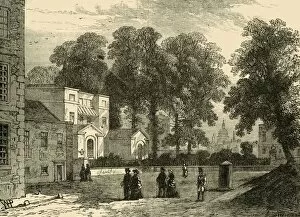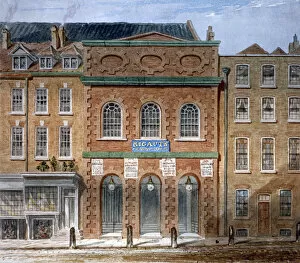Sir John Vanburgh Collection
Sir John Vanburgh was a renowned English architect and playwright, known for his distinctive designs and contributions to the world of theater
All Professionally Made to Order for Quick Shipping
Sir John Vanburgh was a renowned English architect and playwright, known for his distinctive designs and contributions to the world of theater. His architectural masterpiece, Seaton Delaval, showcased his innovative vision with its intricate details and grandeur. The engraving of this design from 1721 captures the essence of Vanburgh's genius. Another notable creation by Sir John Vanburgh is Stowe House, depicted in a captivating image from 1844. The park front of this magnificent structure reflects his ability to seamlessly blend nature with architecture, creating a harmonious environment that still mesmerizes viewers today. Not only did Sir John Vanburgh excel in architecture but also in playwriting. "The Confederacy, " staged at the Haymarket Theatre in 1844, showcases his talent as a playwright. This scene from the play transports audiences into an enchanting world filled with humor and wit. Castle Howard's South Front is yet another testament to Sir John Vanburgh's architectural prowess. The image from 1898 reveals the grandeur and elegance that he brought to every project he undertook. Blenheim Palace's South East View is an exquisite example of Sir John Vanburgh's work captured by William Radclyffe in 1831. Its majestic presence stands as a testament to his ability to create structures that leave lasting impressions on all who behold them. In addition to being an architect and playwright, Sir John Vanburgh himself was immortalized through artistry. A portrait created by William Camden Edwards in 1830 portrays him as a distinguished figure whose creative genius continues to inspire generations. Vanbrugh Castle, depicted around 1878 by an unknown artist, exemplifies how even residential buildings designed by Sir John Vanburgh exude magnificence and charm. Whitehall Yard offers another glimpse into Sir John Vanburgh's architectural legacy through an image dating back to 1881. This bustling location showcases his ability to transform spaces into vibrant hubs of activity and beauty.












